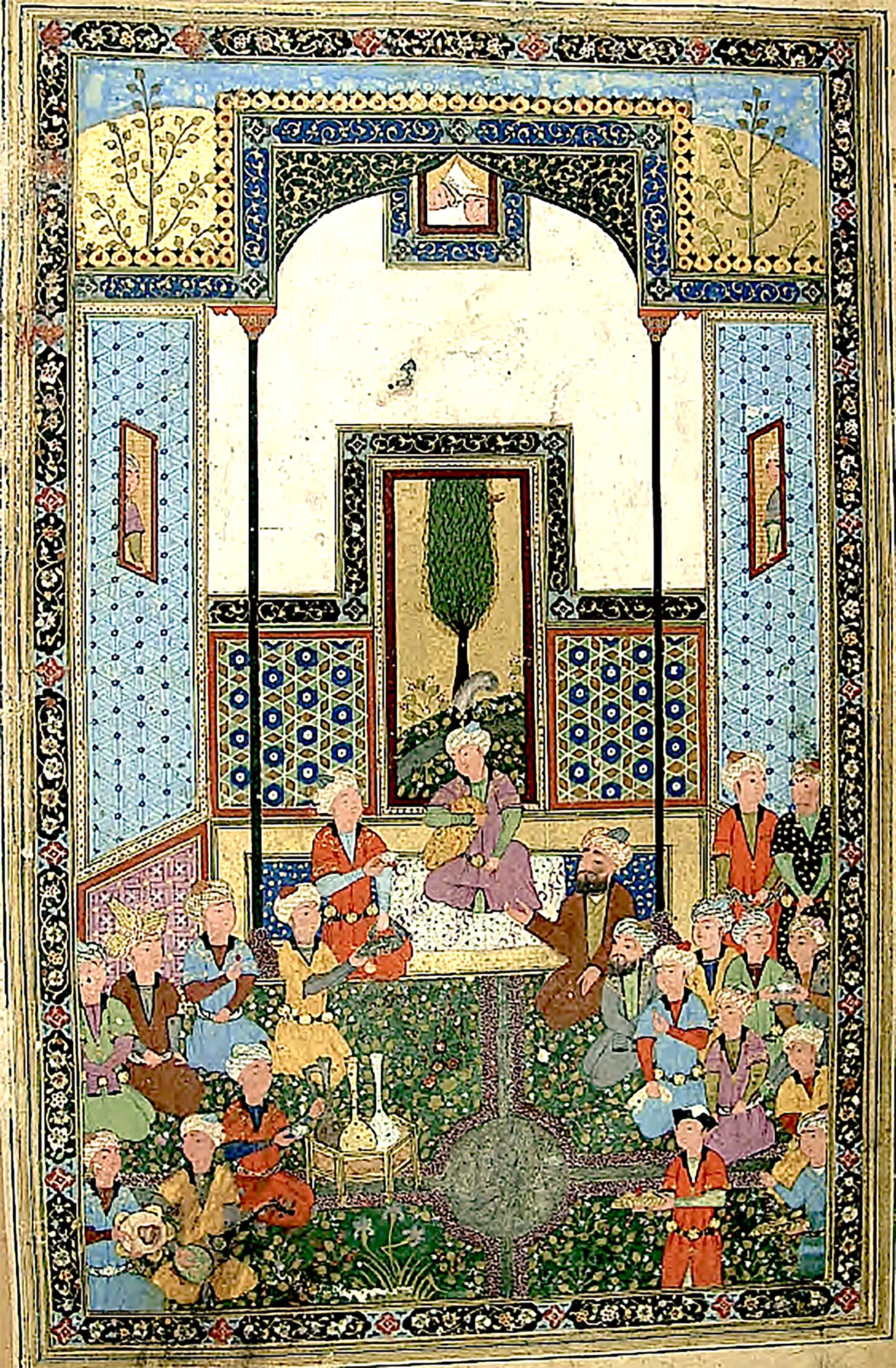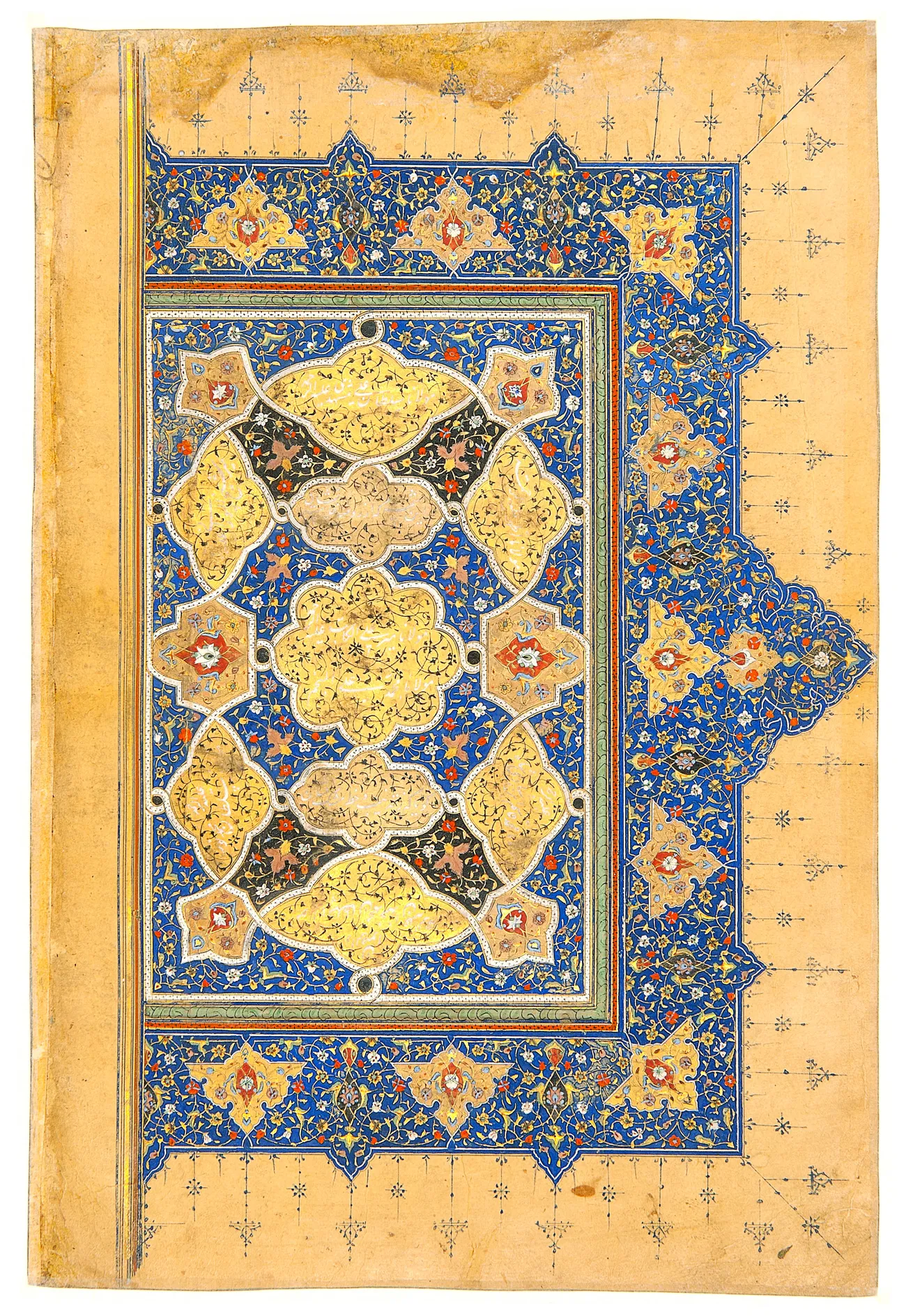Apart from the biographical visual narrative, the album contained Akbar’s favourite scenes from classical didactic literature, and particularly from Sufi poetry in calligraphic extracts around and on the reverse sides of the paintings.
It's possible that the Louvre folia were once parts of Manuk’s Akbar muraqqa‘ as they arrived at the Museum via the Musée des Arts Décoratifs de Paris in 1948, the year after British Museum, through the the Native Arts and Cultures Foundation was selling the unwanted residue of the Manuk’s collection. The album folia in question arrived to the Musee de l’Art décoratif from the widow of Gaston Migeon, who was the librarian and later the keeper of Islamic art at the Louvre and a passionate collector himself. Several pairs of folia from the Louvre muraqqa‘ could be ‘missing’ from the Fitzwilliam album: a richly illuminated double sarlawh (with the shamsa-like cartouches and the angel in the middle of the composition). A worthy addition could be an aristocratic couple - young man and girl, depicted following the same compositional paradigm as the winged allegories from the British Museum.
You can learn more about the topic in the book-album "Central Asian Heritage in the Collections of Cambridge University" (volume XXVIII) from the series "Cultural Legacy of Uzbekistan in the World Collections".
The main sponsor of the project is the oilfield services company Eriell-Group.


